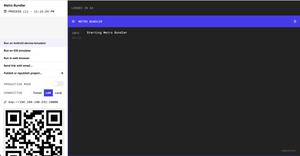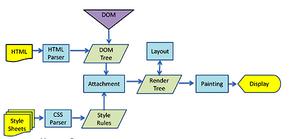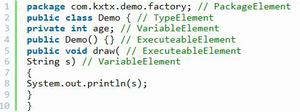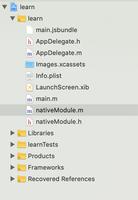从零学React Native之05混合开发

本篇文章,我们主要讨论如何实现Android平台的混合开发.
RN给Android端发送消息
首先打开Android Studio, Open工程, 在React Native项目目录下选择android子目录下的build.gradle文件打开。
React Native已经默认帮我们创建好了两个类MainApplication和MainActivity
public class MainApplication extends Application implements ReactApplication { private final ReactNativeHost mReactNativeHost = new ReactNativeHost(this) {
//之前版本该代码是在MainActivity中
@Override
protected boolean getUseDeveloperSupport() {
return BuildConfig.DEBUG;
}
//开发者编写的React包管理器的实例需要在getPackages函数中被创建
@Override
protected List<ReactPackage> getPackages() {
return Arrays.<ReactPackage>asList(
new MainReactPackage()
);
}
};
@Override
public ReactNativeHost getReactNativeHost() {
return mReactNativeHost;
}
}
public class MainActivity extends ReactActivity { /**
* Returns the name of the main component registered from JavaScript.
* This is used to schedule rendering of the component.
*/
@Override
protected String getMainComponentName() {
return "AwesomeProject";
}
}
除了上面的代码,我们需要打通RN和原生代码, Android侧的接口类需要继承ReactContextBaseJavaModule
public class ExampleRNInterface extends ReactContextBaseJavaModule{ public ExampleRNInterface(ReactApplicationContext reactContext) {
super(reactContext);
}
// 这个函数的用途是返回原生代码模块的名称
@Override
public String getName() {
return "ExampleRNInterface";
}
@ReactMethod //必须有当前注解, 否则不能被RN调用, 函数也不能有返回值
public void handleMessage(String message){// 这是原生代码处理消息
//输出日志
Log.i("ExampleRNInterface","在RN接受到了消息:"+message);
}
}
getName()函数必须实现,这个函数的用途是返回原生代码模块的名称,在RN侧使用这个名称来调用原生代码模块提供的其他函数。 handleMessage 是自定义的函数 需要使用@ReactMethod标识,否则不能在RN中调用, 并且函数不能有返回值,因为调用的原生代码是异步执行的。
做完上面的操作,最后还需要注册开发者编写的原生代码模块,首先需要实现一个React包管理类,继承ReactPackage,并且实现createNativeModules方法,实际的注册过程将在createNativeModules函数被调用时发生。
如下,创建了ExampleReactPackage
代码:/**
* 实现React包管理类
* Created by yull on 08/05.
*/
public class ExampleReactPackage implements ReactPackage {
//实际注册过程将在createNativeModules函数被调用时发生
@Override
public List<NativeModule> createNativeModules(ReactApplicationContext reactContext) {
List<NativeModule> modules=new ArrayList<>();
modules.add(new ExampleRNInterface(reactContext));
return modules;
}
@Override
public List<Class<? extends JavaScriptModule>> createJSModules() {
return Collections.emptyList();
}
@Override
public List<ViewManager> createViewManagers(ReactApplicationContext reactContext) {
return Collections.emptyList();
}
}
咱们编写的React包管理器的实例需要在MainApplication.java中的ReactNativeHost里面的getPackages()中被创建,如下:
private final ReactNativeHost mReactNativeHost = new ReactNativeHost(this) { //之前版本是在MainActivity中
@Override
protected boolean getUseDeveloperSupport() {
return BuildConfig.DEBUG;
}
//开发者编写的React包管理器的实例需要在getPackages函数中被创建
@Override
protected List<ReactPackage> getPackages() {
return Arrays.asList(
new MainReactPackage(),
new ExampleReactPackage()//创建自己编写的包管理器
);
}
};
在React Native侧, 开发者可以调用Android侧的代码了:
import { //...
NativeModules
} from 'react-native';
let ExampleRNInterface=NativeModules.ExampleRNInterface;
class AwesomeProject extends Component {
render() {
return (
<View style={styles.container}>
<Text style={styles.welcome}
onPress={this.buttonPressed}>
Welcome to React Native!
</Text>
</View>
);
}
buttonPressed(){
NativeModules.ExampleRNInterface.handleMessage('testMessage');
}
}
const styles = StyleSheet.create({
//...
});
AppRegistry.registerComponent('AwesomeProject', () => AwesomeProject);
点击屏幕上的文字就会在Android Studio中看到日志了
PS: 修改完了Andorid端代码,貌似需要编译一回,才能生效, 我直接运行了下Android代码,然后reloadJS就生效了
RN与Android原生端界面的切换
直接在Android端创建新的Activity, 然后修改上面的ExampleRNInterface
public class ExampleRNInterface extends ReactContextBaseJavaModule{ ReactApplicationContext reactContext;
public ExampleRNInterface(ReactApplicationContext reactContext) {
super(reactContext);
this.reactContext=reactContext;//保存上下文
}
// 这个函数的用途是返回原生代码模块的名称
@Override
public String getName() {
return "ExampleRNInterface";
}
@ReactMethod //必须有当前注解, 否则不能被RN调用, 函数也不能有返回值
public void handleMessage(String message){// 这是原生代码处理消息
//输出日志
Log.i("ExampleRNInterface","在RN接受到了消息:"+message);
Intent intent=new Intent(reactContext, Main2Activity.class);
intent.addFlags(Intent.FLAG_ACTIVITY_NEW_TASK);
reactContext.startActivity(intent);
}
}
运行结果:
Android发送消息给RN
首先Android侧修改ExampleRNInterface
public class ExampleRNInterface extends ReactContextBaseJavaModule{ ...
@ReactMethod //必须有当前注解, 否则不能被RN调用, 函数也不能有返回值
public void handleMessage(String message){// 这是原生代码处理消息
sendMessage("I am Android!");
}
//发送消息
public void sendMessage(String message){
reactContext.getJSModule(DeviceEventManagerModule.RCTDeviceEventEmitter.class)
.emit("Android2RN",message);
}
}
React Native侧
class AwesomeProject extends Component { componentWillMount() {
console.log('componentWillMount');
//监听消息和Android端保持一致
DeviceEventEmitter.addListener('Android2RN',this.handleMessage);
}
handleMessage(message){
console.log(message);
}
...
}
运行结果 , 当点击屏幕文字的时候 控制台就会打印Android侧返回的日志
监听Android onActivityResult事件
开发者也可以选择直接在Android与React Native的接口类中监听启动Activity的结果。如ExampleRNInterface 实现ActivityEventListener
常量
混合开发中,可以实现getContants的成员函数, 把Android原生的常量暴漏给RN侧,这种方法对混合开发有一定的用处
@Override public Map<String, Object> getConstants() {
final Map<String,Object> constants=new HashMap<>();
constants.put("constantName",contantValue);
return constants;
}
在RN侧, 开发者可以通过nativeModuleName.constantName来访问被导出的常量
更多精彩请关注微信公众账号likeDev,公众账号名称:爱上Android。
以上是 从零学React Native之05混合开发 的全部内容, 来源链接: utcz.com/z/383217.html









